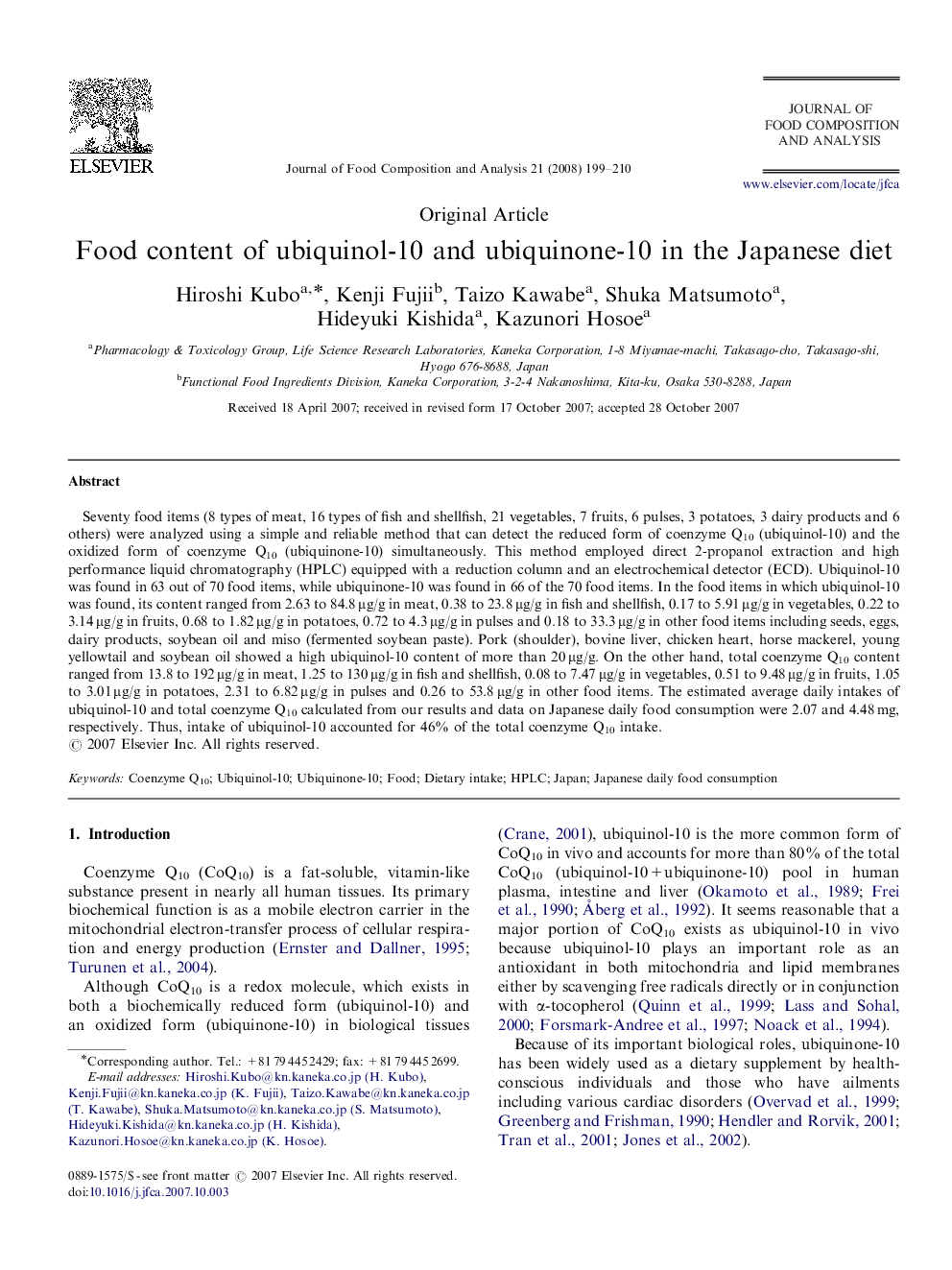| Article ID | Journal | Published Year | Pages | File Type |
|---|---|---|---|---|
| 1219248 | Journal of Food Composition and Analysis | 2008 | 12 Pages |
Seventy food items (8 types of meat, 16 types of fish and shellfish, 21 vegetables, 7 fruits, 6 pulses, 3 potatoes, 3 dairy products and 6 others) were analyzed using a simple and reliable method that can detect the reduced form of coenzyme Q10 (ubiquinol-10) and the oxidized form of coenzyme Q10 (ubiquinone-10) simultaneously. This method employed direct 2-propanol extraction and high performance liquid chromatography (HPLC) equipped with a reduction column and an electrochemical detector (ECD). Ubiquinol-10 was found in 63 out of 70 food items, while ubiquinone-10 was found in 66 of the 70 food items. In the food items in which ubiquinol-10 was found, its content ranged from 2.63 to 84.8 μg/g in meat, 0.38 to 23.8 μg/g in fish and shellfish, 0.17 to 5.91 μg/g in vegetables, 0.22 to 3.14 μg/g in fruits, 0.68 to 1.82 μg/g in potatoes, 0.72 to 4.3 μg/g in pulses and 0.18 to 33.3 μg/g in other food items including seeds, eggs, dairy products, soybean oil and miso (fermented soybean paste). Pork (shoulder), bovine liver, chicken heart, horse mackerel, young yellowtail and soybean oil showed a high ubiquinol-10 content of more than 20 μg/g. On the other hand, total coenzyme Q10 content ranged from 13.8 to 192 μg/g in meat, 1.25 to 130 μg/g in fish and shellfish, 0.08 to 7.47 μg/g in vegetables, 0.51 to 9.48 μg/g in fruits, 1.05 to 3.01 μg/g in potatoes, 2.31 to 6.82 μg/g in pulses and 0.26 to 53.8 μg/g in other food items. The estimated average daily intakes of ubiquinol-10 and total coenzyme Q10 calculated from our results and data on Japanese daily food consumption were 2.07 and 4.48 mg, respectively. Thus, intake of ubiquinol-10 accounted for 46% of the total coenzyme Q10 intake.
